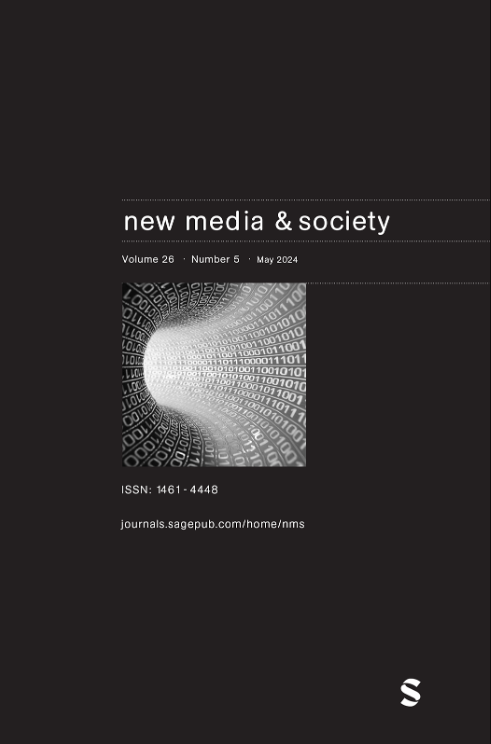自拍和身体不满:使用三方影响模型来研究青少年的时间
IF 4.3
1区 文学
Q1 COMMUNICATION
引用次数: 0
摘要
青少年经常使用自拍。然而,随着时间的推移,自拍与身体不满之间的关系以及其中的机制却知之甚少。本研究通过社会文化中介考察了自拍(即拍摄、操纵、投资和发布)与身体不满之间的纵向关系;薄理想的内化和比较。青少年(N = 573; M年龄= 15.38,SD = 1.34; 68.2%为女性)在4个月内完成了两次在线调查。在交叉滞后的中介模型中,身体不满意预测4个月后投资增加和收入减少呈单向关系。调解只通过一条途径被发现;身体不满意通过向上比较预示着更多的自拍投资。性别并没有调节这种关系。这些发现为社会文化机制提供了很少的支持,建议研究人员寻求替代框架。本文章由计算机程序翻译,如有差异,请以英文原文为准。
Selfies and body dissatisfaction: Using the tripartite influence model to examine adolescents over time
Selfies are frequently used among adolescents. Yet little is known about how selfies relate to body dissatisfaction over time and the mechanisms involved. The present study examined the longitudinal relationships between selfies (i.e. taking, manipulating, investing in and posting) and body dissatisfaction via sociocultural mediators; thin-ideal internalisation and comparisons. Adolescents ( N = 573; M age = 15.38, SD = 1.34; 68.2% female) completed online surveys twice over 4 months. A cross-lagged mediation model demonstrated unidirectional relationships, whereby body dissatisfaction predicted higher investment and lower posting 4 months later. Mediation was only found via one pathway; body dissatisfaction predicted greater selfie investment via upward comparisons. Gender did not moderate the relationships. These findings provide little support for sociocultural mechanisms, suggesting researchers pursue alternative frameworks.
求助全文
通过发布文献求助,成功后即可免费获取论文全文。
去求助
来源期刊

New Media & Society
COMMUNICATION-
CiteScore
12.70
自引率
8.00%
发文量
274
期刊介绍:
New Media & Society engages in critical discussions of the key issues arising from the scale and speed of new media development, drawing on a wide range of disciplinary perspectives and on both theoretical and empirical research. The journal includes contributions on: -the individual and the social, the cultural and the political dimensions of new media -the global and local dimensions of the relationship between media and social change -contemporary as well as historical developments -the implications and impacts of, as well as the determinants and obstacles to, media change the relationship between theory, policy and practice.
 求助内容:
求助内容: 应助结果提醒方式:
应助结果提醒方式:


